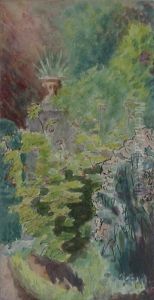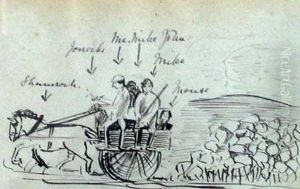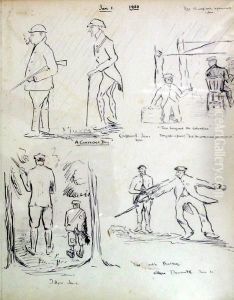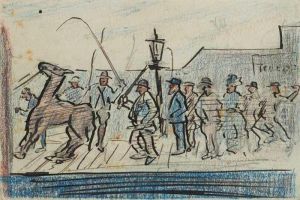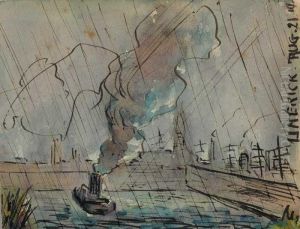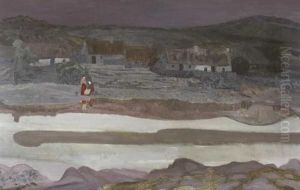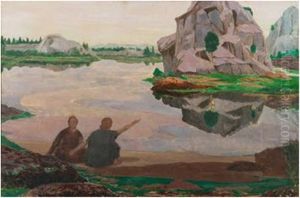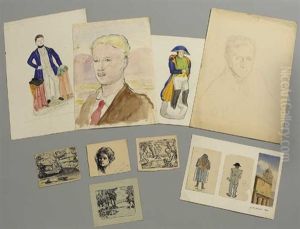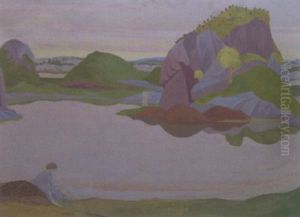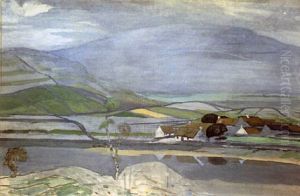Robert Gregory Paintings
Robert Gregory was an Irish artist born on March 20, 1881, in County Galway, Ireland, to Lady Augusta Gregory and her husband Sir William Henry Gregory. The Gregory family was prominent in the arts and literary circles, with Lady Gregory being a well-known dramatist and co-founder of the Abbey Theatre in Dublin. Though Robert Gregory is not as widely recognized as some of his contemporaries, he left an indelible mark on the Irish cultural landscape through his art and tragic early death.
Educated at Harrow School and subsequently at the Slade School of Fine Art in London, Gregory developed his artistic skills under the prominent tutors of the time including Henry Tonks and Frederick Brown. He also travelled to Italy to further his studies, where he was influenced by the Renaissance masters. Gregory's style was characterized by his attention to detail, use of color, and the incorporation of classical and literary themes.
Gregory's life and career were cut short when he joined the British Royal Flying Corps during World War I. His experience as a pilot during the war influenced his later works, which often included themes of flight and the mechanical aspects of airplanes. Tragically, his promising career was brought to an abrupt end when he was mistakenly shot down by an Italian pilot over the Italian front on January 23, 1918.
Despite his untimely death at the age of 36, Robert Gregory left behind a body of work that was admired by his peers. His paintings are held in various collections and continue to be studied for their contribution to early 20th-century art. Perhaps most notably, Gregory is remembered in literature through the poems of W.B. Yeats, a family friend and collaborator with his mother at the Abbey Theatre. Yeats penned several poems in tribute to Gregory, including 'An Irish Airman Foresees His Death' and 'In Memory of Major Robert Gregory', which immortalize the artist's passion for flying and his ultimate sacrifice.
